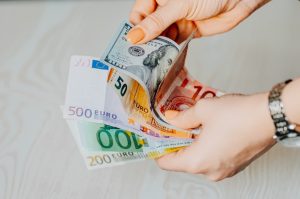Forex trading is one of the most lucrative financial markets in the world, with a daily turnover of over $5 trillion. Banks are among the biggest players in this market, accounting for a significant chunk of the daily trading volume. In this article, we will explore how banks trade forex and the various strategies they use to maximize profits.
Banks are not just involved in forex trading for speculative purposes; they also trade on behalf of their clients, such as multinational corporations and institutional investors. Therefore, banks need to have a deep understanding of their clients’ needs and risk appetite before making any trades.
One of the key advantages that banks have in the forex market is their access to proprietary trading platforms and advanced trading technologies. These platforms enable banks to execute trades quickly and efficiently, which is essential in a market that moves as fast as forex. Banks also have access to sophisticated trading algorithms and market analysis tools that enable them to identify profitable trades and mitigate risks.
Another advantage that banks have in the forex market is their ability to leverage their balance sheets. Banks can borrow money at low-interest rates and use it to trade forex, increasing their potential profits. However, leverage also amplifies the risks of losses, and banks must be careful not to over-leverage their positions.
Banks use various trading strategies to make profits in the forex market. One of the most common strategies is arbitrage, where banks exploit price differences between different currency pairs or financial instruments. For example, if a bank observes that the EUR/USD exchange rate is higher on one trading platform than on another, it can buy EUR on the lower-priced platform and sell it on the higher-priced platform, making a profit from the price difference.
Banks also use technical analysis to identify trends and patterns in the forex market. Technical analysis involves using charts and indicators to identify potential trading opportunities. For example, a bank may use moving averages to identify the direction of a trend and then use support and resistance levels to determine entry and exit points for a trade.
Fundamental analysis is another strategy used by banks to trade forex. This involves analyzing economic and political factors that affect the value of currencies. For example, a bank may analyze the impact of interest rate changes, inflation rates, and political events on the value of a currency. Based on this analysis, the bank may decide to buy or sell a currency pair.
Banks also use hedging strategies to manage their risk exposure in the forex market. Hedging involves taking positions that offset the risk of other positions. For example, a bank may go long on one currency pair and short on another currency pair to hedge against currency fluctuations.
In conclusion, banks are major players in the forex market, leveraging their balance sheets and advanced trading technologies to execute trades quickly and efficiently. They use various trading strategies, including arbitrage, technical analysis, and fundamental analysis, to identify profitable trades and manage their risk exposure. As the forex market continues to evolve, banks will continue to play a crucial role in shaping its dynamics.






